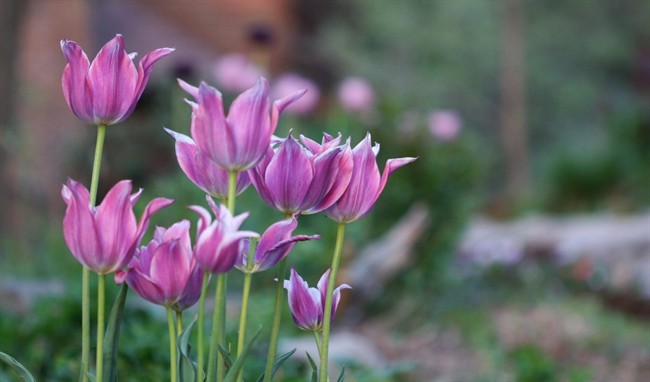Veteran bulb growers have learned to put patience ahead of pruning in helping their perennials bloom season after season. They’re in no rush to remove the unsightly leaves and stems of these botanical storehouses, which need time after flowering to renew their growth cycle.

“We consider the foliage of the bulbs the ‘recharging batteries’,” said Becky Heath, president and chief executive officer of Brent and Becky’s Bulbs at Gloucester, Va. “If they aren’t recharged, the flowers won’t bloom again.”
Bulbs will green up despite premature pruning, but return with fewer and smaller blossoms. How long must you wait before trimming the foliage to get successive seasons of colour?
“After spring-flowering bulbs finish blooming, allow for approximately six to eight weeks before removing the foliage to ground level,” said Hans Langeveld, co-owner of Longfield-Gardens.com, a retail website for bulbs, perennials and edibles in Lakewood, N.J.
“Another rule of thumb is to wait until the foliage turns brown and dries out.”
That garden grooming tip applies to all spring-flowering bulbs including tulips, daffodils, hyacinths, crocus, alliums and specialty varieties, Langeveld said. But there are ways to make the decay less unsightly.
“An idea is to combine bulbs with other perennials in the borders like hosta so that hosta foliage covers the dying bulb foliage,” he said.
Summer-blooming bulbs that flower until cold weather arrives need differing levels of maintenance. “This (first killing frost) would be the time to cut to ground level and dig the bulbs that are not winter-resistant, like dahlias, gladiolus and begonias,” Langeveld said.
Other post-bloom, bulb-care suggestions
- Braiding. “The only foliage that lends itself to be braided are daffodils,” Langeveld said. “It is not a necessity, but it will help keep your borders neat and tidy.”
- Seed pods. “Make sure to remove the seed pods that sometimes form after blooming,” he said. “These eat up a lot of energy from the bulbs.”
- Fertilize when planting for healthier roots. Before and during bloom also are good times to apply bulb fertilizer, said Leonard Perry, an extension professor with the University of Vermont. “This can be a granular form (of fertilizer) as bulbs are emerging or you can water with a liquid fertilizer,” he said in a fact sheet. “The key is to provide nutrients as the leaves are making food for the next year.”
- Divide the bulbs if they’re becoming too crowded, as often happens with large daffodil clumps, or if they are blooming less each year, Perry said. “Dig and shake the soil off bulbs after bloom, leaving leaves attached if not died off already. Bulbs should separate naturally, otherwise plant back ones still joined together,” he said. “Don’t forcibly pry bulbs apart.”
Should you treat tulips as annuals or perennials?
Tulips need to be in dry, well-drained soils during their summer dormancy if they’re to multiply or return to bloom, said Scott Kunst, head gardener and owner of Old House Gardens in Ann Arbor, Mich.
“That’s hard to come by in the rainy eastern half of the U.S. or where people water during the summer,” he said. “In those situations, many people just grow tulips as annuals.”

Comments